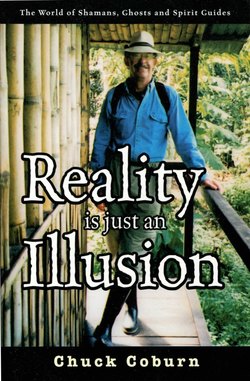Читать книгу Reality Is Just an Illusion - Chuck Sr. Coburn - Страница 10
На сайте Литреса книга снята с продажи.
The World According
to Shamans
ОглавлениеSo, what exactly can the shamans teach us? To begin with, let's look at their view of physical existence and how it differs from what we Westerners were taught in school. My generation was led to believe that all of reality can be defined, explained, and understood by studying the well-known laws of physics. Sir Isaac Newton said that all observable events are predictable once they are categorized and understood. He lumped all of what he termed reality into specific edicts such as the law of gravity, perpetual motion, and so forth.
Now, several generations later, our highly educated scientists have modified their views. My grandchildren are learning about a relatively new concept: quantum physics. Einstein and Bohr discovered that the act of observation changes the reality of the object or event observed. They profess that if we expect something to happen, our expectation influences the result. Modern scientists point to quarks, the smallest building blocks of physics, and tell us that the act of observation actually influences an object.
The shamans have yet another view of reality—one that hasn't changed for centuries. They believe it is not the act of observation but how one observes that dictates reality. They claim that we each see the reality we intend to see . . . and it is an illusion.
Who is to say that the ways of the shamans are outdated or incorrect? Doesn't our perception affect our reality? We certainly laugh more easily at someone whom we anticipate will be funny. Are we not less successful when we expect to be? Physicians are even beginning to articulate the notion that attitude has a lot to do with health. The placebo that we expect to cure our illness has been clinically proven to be a positive influence on recovery.
Shamans (often called seers) not only "see" things by means other than the standard five senses, but are able to project their intentions, effectively altering the energy of people and objects through various consciousness-changing techniques. They do not consider what they do to be a religious practice or even a belief system—it is a way of being.
Ecuadorian shamans communicate with the many aspects of nature, often singing and interacting with the plant and animal spirits of the earth. Since they depend on their environment for everything of value to them, they treat it with the respect it deserves. The Amazon Shuar people call the ground Nunkqui, the earth goddess. The Andean Quechuan [pronounced catch-uan], in the high altitudes of Ecuador and areas of Bolivia and Peru, call it Pachamama. Both words roughly translate to "mother earth" but, in truth, these terms encompass all of nature and the universe as a whole. These people live a simple life. They truly live in the moment. They live with an inner peace—a connection with their environment that transcends all conventional understanding.
What particularly fascinates me about these Ecuadorian rain forest shamans is that they truly live in the moment of now. However, when they wish to alter a present condition that arose because of past events, they simply re-dream the related events—essentially revising history with the goal of transforming the present and therefore, the future. By modifying old, outmoded belief systems, they alter the perception of what is to come. They believe that by redreaming or re-experiencing the past, the future will take on new meaning. Following this logic, they suggest that if we in the "modern world" were to change our perspective about a past emotional event, then we, too, could modify future perspectives and judgments about the way things are. Since these shamans believe that many diseases (dis-eases) are the result of an emotional difficulty, they contend that if you can eliminate the trauma associated with the original event, you will lessen the resultant negative physical manifestation.
One of the physical tools they use to accomplish this change and healing is ayahuasca, a foul-tasting hallucinatory substance derived from a local plant. It is only used ceremoniously for the purpose of enhancing spiritual growth and healing by connecting the one being healed to the spirits of the rain forest.
My party was soon to experience an ayahuasca healing. However, we would first be required to consume a significant amount of the worst-tasting, most unappetizing social beverage I've had the occasion to try, called chincha. Both ayahuasca and chincha are prepared using plentiful natural ingredients found in the rain forest—roots, plants . . . and human spit.
